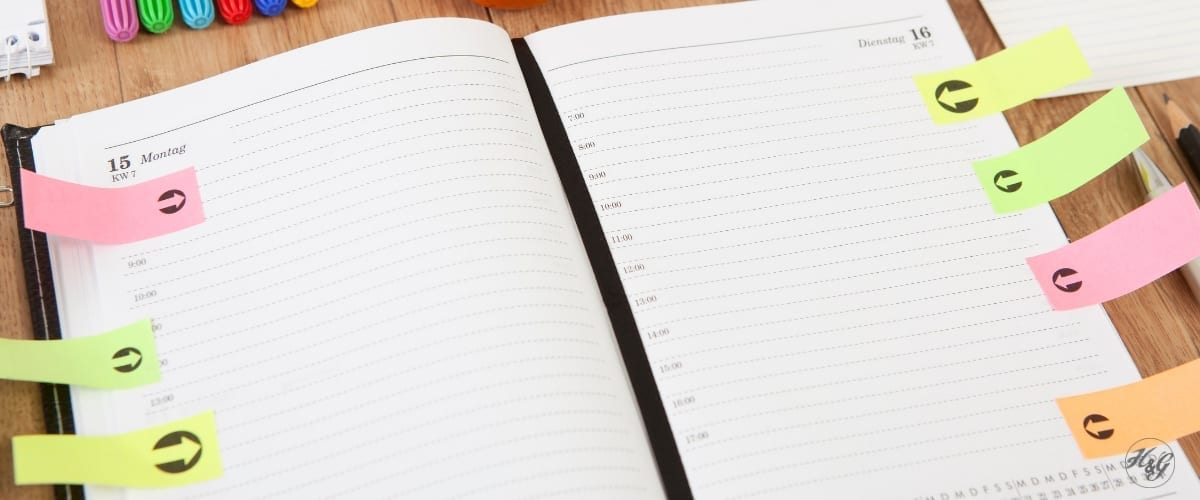Are you stuck wondering how to plan your work week around your side hustle? How do you manage a side hustle when you work from home, or if you are still working a full-time job? What does that look like?
I want to talk to you about how to plan out your work week for your side hustle. This applies whether you're working full time in it, you've just transitioned, or you are balancing it with your full-time job.
Table of Contents
How do you figure out what that looks like?
The first thing that you'll want to make sure that you do is identify the hours that you're actually able to work in your side hustle. This is particularly important if you are still working a full-time job. Figure out what those hours are.
- How many hours a week are you dedicating to your side hustle?
- Are you doing them in the morning before you go to work?
- Are you doing them in the afternoon when you get home?
So figure out what that looks like and write that down first.
The next thing that you need to do is figure out your client deadlines. When is stuff due back to your client?
Figure out what that looks like for at least the next 30 days. Map out the due dates for all of your client work.
Buffer your deadlines
Now a big tip here … Make sure you buffer in some time.
I'm a huge fan of whenever I have a deadline of buffering in about 24 hours.
What do I mean by that? It just means that I set my deadline 24 hours earlier than it actually needs to be completed, just in case something happens and I actually need the full deadline. Choose a buffer that makes the most sense for you.
If you're just sort of starting out on your side hustle, I'd recommend giving yourself a two-day buffer. This will provide you a little bit of time to manage all the things and figure out what your workflow looks like.
Once you’ve got that sorted, 24 hours of buffer time should be plenty.
Structure Your Day and Week in Advance
Once you've got those pieces in place, then it comes down to how to actually structure out your day, then your week. For me, I am super focused on three things:
- time blocking,
- batching, and
- scheduling
Let’s take a look at each of those three things now, and then how you can move that into an actual plan for your work week.
Time blocking
Time blocking is simply choosing to block off focused time that I'm actually working.
So for you, if you're working in your side hustle part-time, start with a two-hour time block in the morning when you work in your side hustle. This is about taking the hours that you have available and then blocking them off based on what it is that you're trying to accomplish.
I'm a huge fan of doing 90-minute blocks versus anything longer. After 90 minutes of continuous, focused work, I need to take a break. So 90 minutes works for me. 60 minutes might work for you. 120 minutes might work for you. It's whatever works best for your schedule.
I typically have three to four 90-minute time blocks blocked out in my calendar. Those are for focused times of work. Focused time means that I’m only focusing on one thing during that time, nothing else.
The starting point is to identify your hours, then time block based on how long you like to work. 60 minutes is a good starting point, especially if you’re just getting started. Give yourself a little bit of leeway in terms of how much time you can actually handle when you're doing your side-hustle hours.
And that is time blocking in a nutshell.
Task batching
The next part is batching. I'm sure you've heard this before, but here’s what it looks like in action.
Right now, I’m batching all my videos. I have planned out the content for my YouTube channel for the next month and decided that one day a month I am batching all the videos that I need to record for the month ahead.
Batching is all about grabbing the same or similar tasks together in a focused time block.
For example, if you are a freelance writer and maybe writing blog posts for a client, you want to be smart and make sure that they give you all the topics for the month ahead of time. Then through batching, you’d write those all in one day.
That would be using a focused time block or two and batching, so you're doing all of the same things in the one time block.
Batching makes you more productive
Batching is all about making sure you're not context switching. Context switching is when you are in the middle of doing something, and then you switch to another task, and then you switch back again.
If you're constantly doing that, which I am sure you are doing in your own full-time job, it takes about 10 minutes to get back on track with that task.
For example, if you were working on a blog post and then changed into answering an email, and you come back to that blog post, you're going to have to go back through and read what you've already written to figure out where you're at and to get your brain back into that thought space.
Can you see all the time wasted by doing that?
You want to make sure you're not context switching so you can optimize the time that you're actually working. That's why I love time blocking and batching together. I can take a 90-minute time block, and then add batching so I'm only focusing on one thing at a time. It actually allows me to breeze through all of my tasks and priorities really quickly.
Scheduling
The last piece of this puzzle is scheduling. I'm a huge fan of my Google Calendar. I use it in conjunction with my Trello boards, which connects into my Google Calendar and is color coded.
Remember those client deadlines that I was talking about? Those are in Trello too. I have a board for each project that I'm working on. I set the due dates and then that populates into my Google Calendar.
I can always look at my calendar and see what the plan is for the work week coming up and what I need to be working on. I can see all my time blocks as well.
Here’s What Planning Your Work Week Looks Like in Action
At the beginning of my work week, and generally on a Sunday afternoon, I sit down and map out what my schedule is going to be for the rest of the week. I will time block, batch, and schedule out everything that I’m focusing on in the week ahead.
For example, if I know that I've got to do all these videos, then I know that it’s going to take two time blocks to get it done. Then I block that off in my calendar, and that will feed through from my content board on Trello. I have a video on how to do that in this post.
It's all about figuring out what works for you, and then getting it down into something that you can refer to all the time. I use a mixture of my Google Calendar, where everything is hanging out, and an actual physical planner to remind myself of the things I need to do.
My physical planner forces me to focus on my top five goals for the next seven to 10 days, and then at a granular level, what I'm doing in the morning and what I'm doing in the evening. Then I'm referring to my Google Calendar.
It's about using whatever tools you have available, and figuring out your next best option in terms of scheduling and planning out your work week.
If you need further clarification on how to plan your work week and be more productive in general, check out this course (plus ebooks, planners, workbooks etc) I created specifically to increase online entrepreneur productivity. When you get control of where you spend your time, you can expect increases in profitability and overall happiness. Time management really is that life-changing!
Your Action Step
Your immediate action step is three-fold:
- figure out the hours you have available for your side hustle
- figure out client deadlines, and
- figure out time blocking, batching, and scheduling for yourself based on what you've just learned.
This is very much trial and error, so try out something for seven days. If it doesn't work, try something else. It’s about finding that sweet spot. Honestly, within a couple of weeks, you will absolutely have identified a plan for your work week that's best for you.
